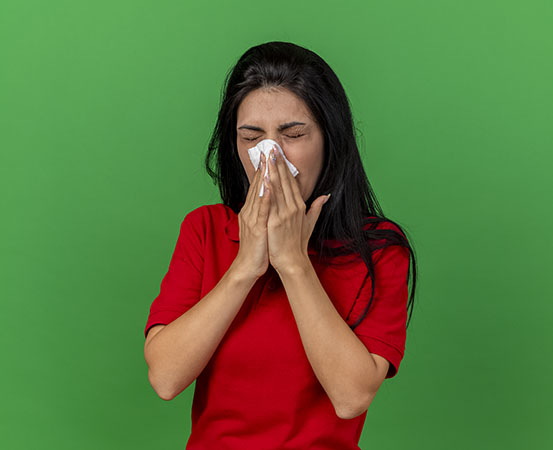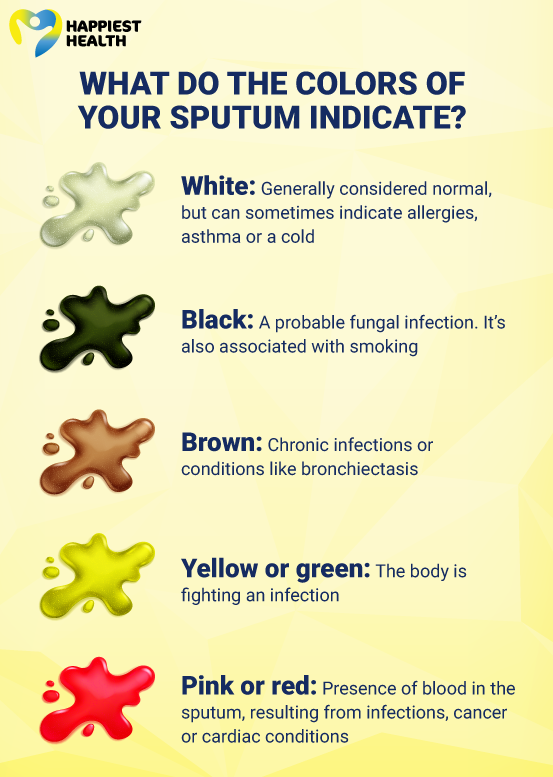
Phlegm, sputum, mucus or snot — the slimy, gelatinous liquid that lines our lungs and airways has several identities. Largely made up of water (over 97%), sputum also contains proteins, sugars, salts and a substance called mucin, which gives it its jelly-like texture. Just like its various names, mucus can manifest in different colors and textures. Every color of the sputum has a specific significance that provides crucial insights into one’s health.
What are the functions of mucus?
Mucus, infamous for showing up in untoward situations, serves some really important functions. “It acts as a lubricant, keeping the airways moist and facilitating their movement during respiration,” says Dr Arunesh Kumar, senior consultant and head of respiratory medicine, Paras Hospitals, Gurugram.
He also shares that mucus has a protective role, preventing bacteria, viruses, fungi, allergens and other particles from entering the lungs. “Phlegm traps and sometimes kills these foreign particles and expels them from the body,” he adds. Further, the antibodies present in mucus combat viruses and bacteria, protecting the air passages.
In certain cases — such as a chest infection or allergy — our body produces excess mucus to fight the influx of pathogens. Usually expelled from the body through the nose and mouth, mucus can also enter the stomach when swallowed. Upon reaching the organ, it gets digested and eliminated through feces and urine.
Different colors of sputum: What do they signify?
“The color of the sputum can range from white, cream, yellow and green to blood-tinged, dark brown and even black, depending on the physiological and pathological status of an individual,” says Dr Prabhu Prasad, consultant interventional pulmonologist, Manipal Hospital, Goa. The significance of the different colors is as follows:
♦ Yellow or green
Yellow or green-colored phlegm indicates that your immune system is fighting a chest infection; such colors getting darker is an indication that the infection is getting severe. “It is a sign that the current treatment isn’t working and needs to be changed or intensified,” says Dr Kumar. On the other hand, if the phlegm is turning whitish, it means that the individual is recovering from the infection.
♦ White
“While white sputum is usually considered normal, it can also indicate nasal congestion due to a mild cold, allergies, asthma or viral infections,” says Dr Manish Itolikar, consultant physician, Fortis Hospital, Mulund, Mumbai.
♦ Brown
According to Dr Itolikar, brown-colored sputum can result from bleeding in the respiratory tract, which can arise due to sinusitis or a severe or chronic infection. It can also be a symptom of underlying conditions like bronchiectasis, where the airways widen, leading to a buildup of excess mucus.
♦ Black
“Blackish phlegm is seen in the case of fungal infections and severe asthma,” says Dr Prasad.
Black sputum is commonly seen among smokers, especially in the mornings. Conditions like black lung (also known as coal workers’ pneumoconiosis), an occupational lung disease caused by inhalation of coal dust, can also cause black-colored sputum.
♦ Pink or red
Red sputum indicates that one is coughing up blood, usually resulting from an infection. It can also be a sign of several other conditions, including lung cancer. “Pink, frothy phlegm accompanied by shortness of breath and chest pain can be a sign of cardiac failure,” says Dr Kumar.

Sputum culture test: A useful diagnostic method
In this test, a sputum sample is taken and examined under the microscope to detect infection-causing pathogens. Some conditions that can be diagnosed by a sputum culture test include pneumonia, tuberculosis, chronic obstructive pulmonary disease and cystic fibrosis.
Look out for persistent cough
“A persistent cough that lasts over three weeks without a known cause requires medical intervention,” says Dr Kumar. He adds that even if the cough is a manifestation of a known infection or allergy, its persistence beyond three weeks is a cause for concern.
Takeaways
Mucus or phlegm acts as a lubricant, facilitating the movement of airways during respiration. It also prevents pathogens from entering the lungs. Sputum can be of different colors — such as white, green, yellow, brown and black — each providing crucial information about one’s health. If a cough persists beyond three weeks, immediate medical intervention is necessary.

















